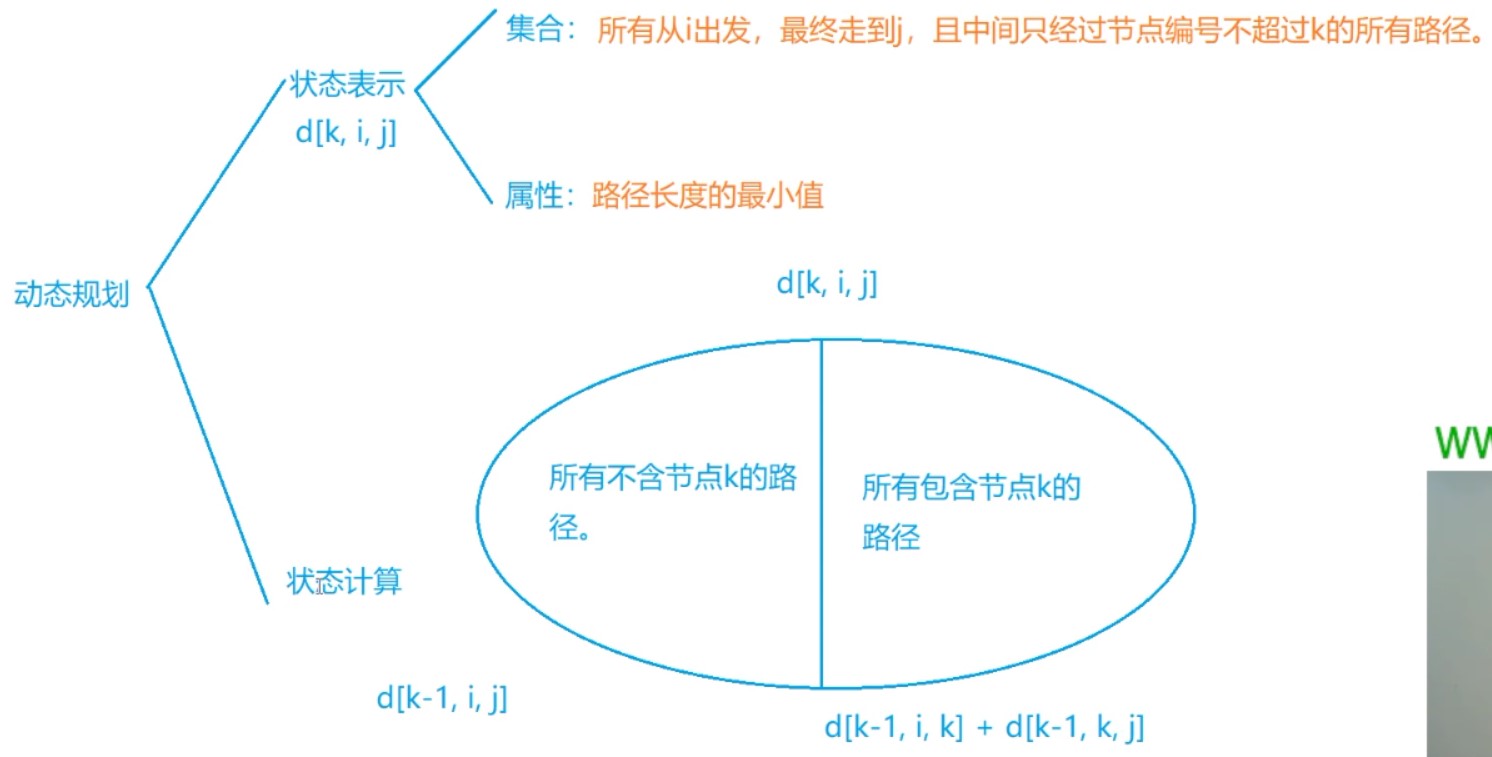Floyd使用场景:
Floyd算法的DP分析法与优化:
本题思路:
答案可能为:
1. 所有连通块内两个点的最长的距离(直径)。
2. 在任意两个非连通块中加一条边构成连通块的最短距离。
import java.io.*;
import java.util.*;
public class Main {
static int N = 200;
static double INF = 1e20; // double情况下的INF可以开大点
static char[][] g = new char[N][N]; // 邻接矩阵
static double[][] d = new double[N][N]; // floyd最短路
static PII[] q = new PII[N]; // 存储每个点的x、y坐标
static double[] maxd = new double[N]; // floyd中到每个点的最长距离
static class PII {
int x, y;
public PII(int x, int y) {
this.x = x;
this.y = y;
}
}
public static double get_dist(PII a, PII b) {
double y = b.y - a.y, x = a.x - b.x; // 负数在下面平方后为正数
return Math.sqrt(x * x + y * y);
}
public static void main(String[] args) throws IOException {
BufferedReader br= new BufferedReader(new InputStreamReader(System.in));
BufferedWriter bw = new BufferedWriter(new OutputStreamWriter(System.out));
int n = Integer.parseInt(br.readLine());
String[] s1;
// 坐标
for (int i = 0; i < n; i++) {
s1 = br.readLine().split(" ");
q[i] = new PII(Integer.parseInt(s1[0]), Integer.parseInt(s1[1]));
}
// 邻接矩阵
for (int i = 0; i < n; i++) {
g[i] = br.readLine().toCharArray();
}
// floyd初始化
for (int i = 0; i < n; i++)
for (int j = 0; j < n; j++)
if (i != j) {
if (g[i][j] == '1') d[i][j] = get_dist(q[i], q[j]);
else
d[i][j] = INF;
}
// floyd计算
for (int k = 0; k < n; k++)
for (int j = 0; j < n; j++)
for (int i = 0; i < n; i++)
d[i][j] = Math.min(d[i][j], d[i][k] + d[k][j]);
// 计算最短路中到每个点的最长距离
for (int i = 0; i < n; i++)
for (int j = 0; j < n; j++)
if (d[i][j] < INF)
maxd[i] = Math.max(maxd[i], d[i][j]);
// 连通块中最长距离
double res1 = 0;
for (int i = 0; i < n; i++)
res1 = Math.max(res1, maxd[i]);
// 任意两个非连通块连通后的内部最短距离
double res2 = INF;
for (int i = 0; i < n; i++)
for (int j = 0; j < n; j++)
if (d[i][j] >= INF) // 注意double在比较大小时的精度问题
res2 = Math.min(res2, get_dist(q[i], q[j]) + maxd[i] + maxd[j]);
bw.write(String.format("%.6f\n", Math.max(res1, res2)));
bw.flush();
}
}





